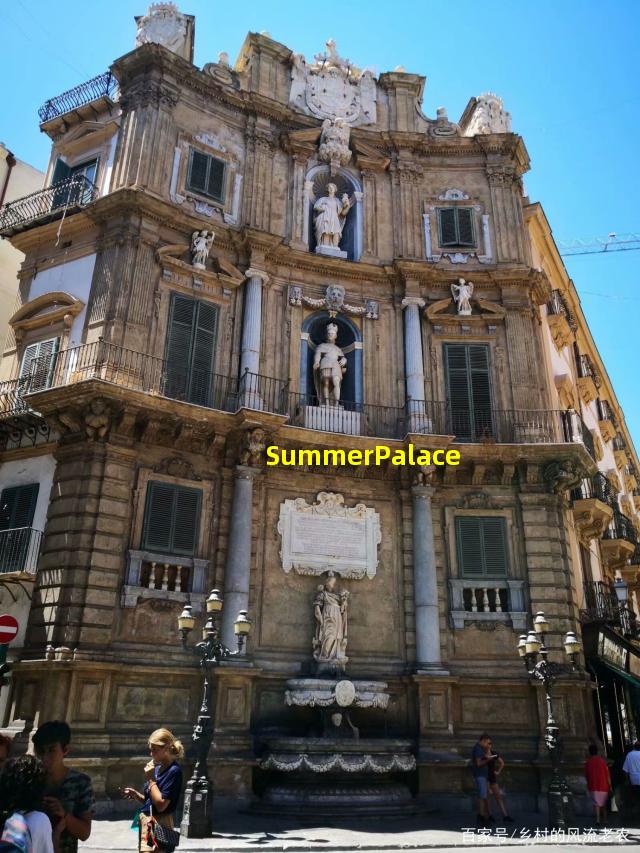中国的著名旅游景点(中国的著名旅游景点,什么样的故宫博物院)
1、中国的著名旅游景点
1. 长城
作为中国最著名的旅游景点之一,长城被誉为世界七大奇迹之一。这座古老的防御工事不仅具有重要的历史意义,也提供了壮观的自然景观。游客可以在长城上徒步漫游,欣赏壮丽的山脉和美丽的景色。

2. 故宫
位于北京的故宫是中国古代宫殿建筑的杰作,也是世界上最大的宫殿建筑群之一。故宫内部有许多宫殿、庭院和花园,展示了中国古代帝王的豪华生活。游客可以欣赏到宫殿的华丽装饰和珍宝,感受中国古代的文化底蕴。
3. 兵马俑
兵马俑位于西安市,是中国古代秦始皇的陪葬品。兵马俑是世界上最大规模的古代陶塑群,展示了秦朝的军事力量和工艺水平。游客可以欣赏到数千个栩栩如生的兵马俑,每一个兵马俑都具有独特的面貌和表情。

4. 黄山
黄山位于安徽省,是中国最著名的山脉之一。它以其怪石峰林、奇松、云海和温泉而闻名。登上黄山,游客可以欣赏到壮观的山峰、瀑布和迷人的日出日落景色。这里也是中国传统绘画中的灵感之地。
5. 桂林山水
桂林山水是中国最美的自然风景之一,以其独特的喀斯特地貌而闻名。游客可以乘坐船舶在漓江上游览,欣赏到奇峰、怪石和清澈的水。这里的山水景色被誉为“桂林山水甲天下”,是摄影师和艺术家的天堂。
总结起来,中国的著名旅游景点包括长城、故宫、兵马俑、黄山和桂林山水。这些景点不仅有着丰富的历史文化底蕴,还提供了壮丽的自然景色,吸引着来自世界各地的游客。无论是对历史感兴趣还是对自然风光着迷,这些景点都会给游客留下深刻的印象。
2、中国的著名旅游景点,什么样的故宫博物院
1. 故宫博物院的介绍
故宫博物院位于北京市中心,是中国最著名的旅游景点之一。它是中国明清两代的皇宫,曾经是二十四位皇帝的居所,现在已经成为世界上最大、最完整的古代宫殿建筑群。
2. 故宫的历史
故宫的历史可以追溯到明朝。明成祖永乐年间开始修建故宫,经历了多次扩建和修缮。清朝康熙年间,故宫完成最后的扩建,并且成为了清朝皇帝及其宫廷的居住之地。
3. 故宫的建筑风格
故宫博物院占地面积约为72万平方米,建筑群主要包括正殿、后宫、宁寿宫、养心殿等。故宫的建筑风格以黄色为主色调,融合了中国古代建筑的优秀传统,展现了中国建筑艺术的精华。
4. 故宫的文化遗产
故宫内收藏了大量的艺术品和文物,其中包括书画、陶瓷、玉器、瓷器等。这些文物代表了中国古代文化的精髓,很好地展示了中国古代皇室生活和文化艺术。
5. 参观故宫的注意事项
参观故宫时,游客需要注意遵守规定,如穿着得体、不随地乱丢垃圾等。同时,也要注意保护文物和古建筑,不触摸、不乱画或乱刻。

故宫博物院作为中国的著名旅游景点,吸引了无数国内外游客的目光。其独特的建筑风格、丰富的文化遗产以及历史的厚重感,使其成为了中国文化的瑰宝和世界文化遗产的代表之一。
3、中国的著名旅游景点的中英文介绍
1. Forbidden City (紫禁城)
The Forbidden City, located in Beijing, is one of China's most iconic landmarks. It was the imperial palace during the Ming and Qing dynasties and is now a UNESCO World Heritage site. With its grand architecture and rich historical significance, the Forbidden City attracts millions of visitors each year.

2. The Great Wall of China (长城)
Stretching over 13,000 miles, the Great Wall of China is an impressive feat of ancient engineering. It was built to protect China from invasion and is considered one of the New Seven Wonders of the World. Visitors can hike along different sections of the wall and marvel at its breathtaking views.
3. Terracotta Army (兵马俑)
The Terracotta Army is a collection of life-sized clay sculptures depicting the armies of Emperor Qin Shi Huang. Discovered in Xi'an, these statues were buried with the emperor to accompany him in the afterlife. Each soldier is unique and has incredible detail, making it a must-see attraction for history enthusiasts.
4. West Lake (西湖)
Located in Hangzhou, West Lake is renowned for its scenic beauty and tranquil atmosphere. Surrounded by temples, gardens, and pagodas, it has inspired countless poets and artists throughout Chinese history. Visitors can take a boat ride, stroll along the lakeside, or simply enjoy the picturesque views.
5. Zhangjiajie National Forest Park (张家界国家森林公园)
Made famous by the movie "Avatar," Zhangjiajie National Forest Park is a natural wonder in Hunan province. Its towering sandstone pillars and lush greenery create a surreal landscape that seems otherworldly. Visitors can take a glass elevator up to the mountain peaks for breathtaking panoramic views.
6. The Potala Palace (布达拉宫)
Situated in Lhasa, Tibet, the Potala Palace is an architectural marvel and a sacred Buddhist site. It was the winter residence of the Dalai Lama and now serves as a museum. With its stunning golden roofs and intricate design, it is a must-visit destination for those interested in Tibetan culture and history.
Whether you're exploring the majestic Forbidden City, hiking along the Great Wall, or immersing yourself in the serene beauty of West Lake, China offers a wide range of unique and fascinating tourist attractions. Each destination showcases the country's rich history, diverse landscapes, and vibrant culture, leaving visitors with unforgettable memories.
4、中国的著名旅游景点的英文名字
1. The Great Wall of China
The Great Wall of China is one of the most famous tourist attractions in China. Spanning over 13,000 miles, it is an architectural marvel. It is known as "Chángchéng" in Chinese, which translates to the Great Wall.

2. The Forbidden City
The Forbidden City, also called the Palace Museum, is located in Beijing. It was the imperial palace during the Ming and Qing dynasties. Its Chinese name, "Zǐjìn Chéng," means the "Purple Forbidden City."

3. The Terracotta Army
The Terracotta Army is an ancient sculpture collection discovered in Xi'an. It was built to accompany the tomb of Emperor Qin Shi Huang. Known as "Bīngmǎ Yǒng," it means the "Soldier and Horse Funerary Pit."

4. The Li River
The Li River is famous for its mesmerizing scenery in Guilin. It is often referred to as the "Lí Jiāng" in Chinese, which means the "River of Lijiang."

5. The Potala Palace
The Potala Palace is located in Lhasa, Tibet. It was the residence of the Dalai Lama and the spiritual center of Tibetan Buddhism. Its Chinese name is "Bùdálā Gōng," meaning the "Potala Palace."

6. Zhangjiajie National Forest Park
Located in Hunan Province, Zhangjiajie National Forest Park is known for its stunning natural beauty. Its Chinese name, "Zhāngjiājiè Guójiā Sēnlín Gōngyuán," means the "Zhangjiajie National Forest Park."

7. The Mogao Caves
The Mogao Caves, also known as the Thousand Buddha Grottoes, are a UNESCO World Heritage site in Dunhuang. Its Chinese name, "Mògāo Kū," means the "Mogao Caves."

8. The Yellow Mountains
The Yellow Mountains, also called Huangshan, are famous for their breathtaking scenery and unique granite peaks. Its Chinese name is "Huángshān," which means the "Yellow Mountain."

9. The Summer Palace
The Summer Palace in Beijing is a stunning royal garden and a UNESCO World Heritage site. Its Chinese name, "Yīhé Yuán," means the "Garden of Harmonious Unity."

10. The Jiuzhai Valley
The Jiuzhai Valley is a scenic area located in Sichuan Province. Its Chinese name, "Jiǔzhài Gōuzhù Qū," means the "Valley of Nine Villages."

These are just a few of the many famous tourist attractions in China. Each destination represents a unique aspect of China's rich history, culture, and natural beauty. Exploring these sites is sure to be an unforgettable experience for any traveler.

.jpg)
.jpg)
.jpg)
.jpg)
.jpg)
.jpg)